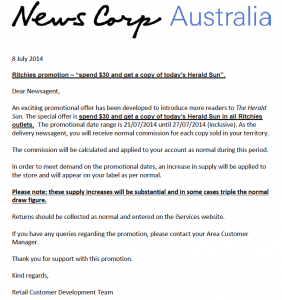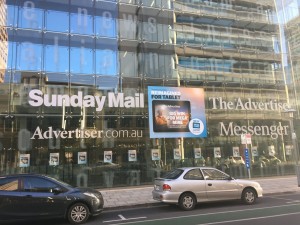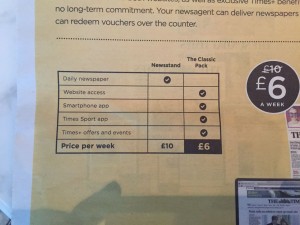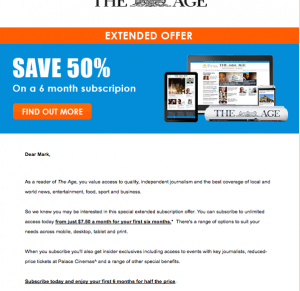 News Corp. yesterday advised newsagents in Victoria of a deal with Ritchies supermarkets where Ritchies get a free Herald Sun if they spend more than $30 in Ritchies.
News Corp. yesterday advised newsagents in Victoria of a deal with Ritchies supermarkets where Ritchies get a free Herald Sun if they spend more than $30 in Ritchies.
It frustrates me that News Corp. does deals like this and others with supermarkets yet they ignore retail newsagents. Two years ago the company made considerable noise that it had plans to drive sales of its newspaper products in newsagencies. They have done nothing – unless I have missed it.
The average newsagency is finely balanced, layered in its reliance of traffic and revenue sources with each stream of the business relying on the other. Every customer encouraged, lured and bribed to change their habit to a purchase elsewhere is a loss not only for that purchase but much more and a loss not only for newsagents but other suppliers such as magazine publishers and card companies.
I think this Ritchies campaign is ill-conceived and unfair on distribution and retail newsagents. It looks like a pitch from people who do not understand print media and the role Australian newsagents play.
Here is what one newsagent directly affected wrote yesterday to News Corp. about this promotion:
I am gob smacked at the narrow minded attitude your company is taking with these types of promotions. They are designed purely to hurt my Retail Market. Supermarkets do enough damage on their own without you guys handing things to them on a platter!
You come into my office and tell me how News Ltd is so focussed on improving the retail strategy with newsagents, how focussed they are on increasing sales with newsagents; it seems to me that is a load of bollocks!
This promotion is solely intended to take customers away from newsagents and hand them to the supermarkets on a platter!!
I disagreed and made formal complaints when you told me about the “trial” offer for News Ltd to control supply of my Ritchies store; nothing was done. It was plain to see that you never had any intention other than to take control of the Ritchies account.
I complained when you stuffed the supply figures up at Easter and I requested that the supply control was given back to my store; I know the seasonal data, you don’t. Nothing was done. No communication or feedback was given from News Ltd, you just continued with the status Quo!
Now some numb-nut sitting in an office thinks “oh hey, how can we screw newsagents over even more”………..and the above promotion is the answer…..sheer brilliance from your marketing team.
You write “An exciting promotional offer has been developed to introduce more readers to The Herald Sun.”, You’ve simply developed a way to take customers away from my store, decrease my basket size, and impacted heavily on MY cash flow by giving a newspaper away for free…………I don’t see anything exciting about it!
This mentality of giving stuff away for free must stop! You have a respected brand that people will pay for; bastardising the product simply to increase your supply numbers is far from brilliant!
You failed to discuss this issue with me which reeks of pure arrogance; I guess you would have known what the response would have been from newsagents!
No mincing of words there. Good on him.
It’s actions like this from News that encourages newsagents to put newspapers to the rear of the store and then to put them on a lower shelf – a slide to newspapers ultimately exiting newsagencies. We can get off this slide if News Corp. employs people who understand print media and who respect Australian newsagents.
If you wrote to News, publisher your comments here. Where do you stand?








